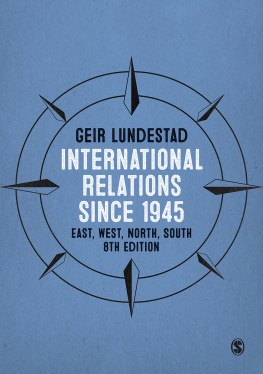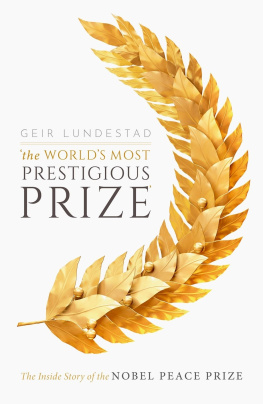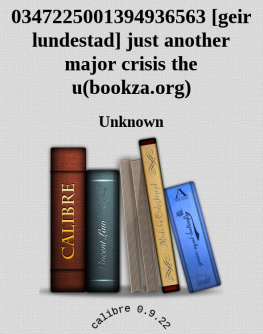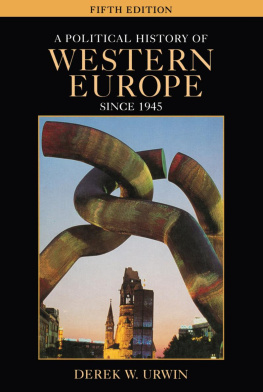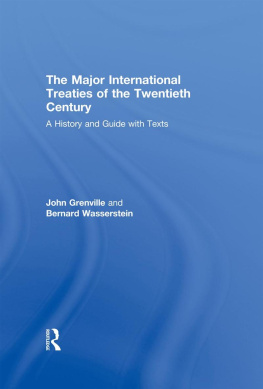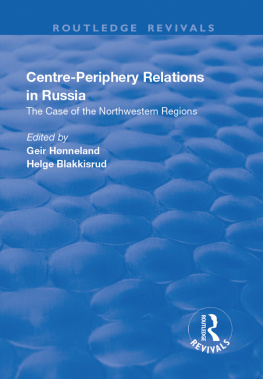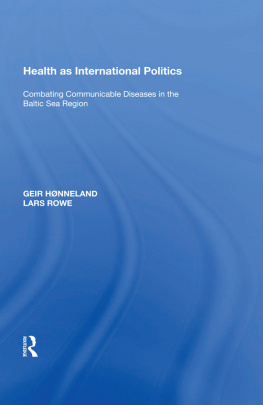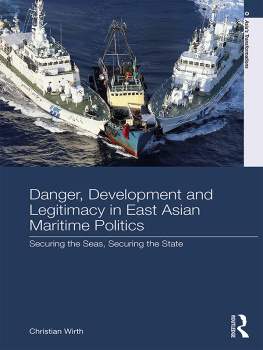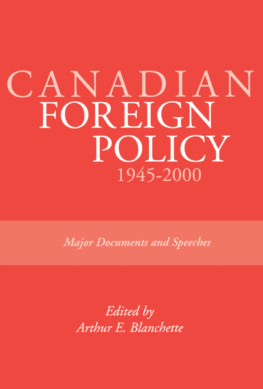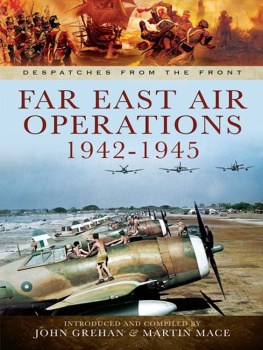SAGE Publications Ltd
1 Olivers Yard
55 City Road
London EC1Y 1SP
SAGE Publications Inc.
2455 Teller Road
Thousand Oaks, California 91320
SAGE Publications India Pvt Ltd
B 1/I 1 Mohan Cooperative Industrial Area
Mathura Road
New Delhi 110 044
SAGE Publications Asia-Pacific Pte Ltd
3 Church Street
#10-04 Samsung Hub
Singapore 049483
Geir Lundestad 2018
Fifth edition published 2005. Reprinted 2007, 2008, 2009.
Sixth edition published 2011.
Seventh edition published 2014.
This edition first published 2018.
Apart from any fair dealing for the purposes of research or private study, or criticism or review, as permitted under the Copyright, Designs and Patents Act, 1988, this publication may be reproduced, stored or transmitted in any form, or by any means, only with the prior permission in writing of the publishers, or in the case of reprographic reproduction, in accordance with the terms of licences issued by the Copyright Licensing Agency. Enquiries concerning reproduction outside those terms should be sent to the publishers.
Library of Congress Control Number: 2017940489
British Library Cataloguing in Publication data
A catalogue record for this book is available from the British Library
ISBN 978-1-4739-7345-9
ISBN 978-1-4739-7346-6 (pbk)
Editor: Natalie Aguilera
Assistant editor: Delayna Spencer
Production editor: Katie Forsythe
Copyeditor: Mary Dalton
Proofreader: Clare Weaver
Indexer: Adam Pozner
Marketing manager: Susheel Gokarakonda
Cover design: Stephanie Guyaz
Typeset by: C&M Digitals (P) Ltd, Chennai, India
Printed in the UK
About the Author
Geir Lundestadwas born in 1945. He was professor of history and American Civilization at the University of Troms from 1974 to 1990. He has held fellowships at Harvard University (197879, 1983) and the Woodrow Wilson Center in Washington, DC (198889).
From 1990 to 2014 Lundestad was the director of the Norwegian Nobel Institute and permanent secretary of the Norwegian Nobel Committee. The Committe awards the Nobel Peace Prize. From 1991 to 2014 he was also adjunct professor of international history at the University of Oslo.
Lundestad has written numerous books and articles on the Cold War and on transatlantic relations. His most recent books are
The Rise & Decline of the American Empire. Power and its Limits in Comparative Perspective (Oxford: Oxford University Press, 2012) and, edited,
International Relations Since the End of the Cold War. New & Old Dimensions (Oxford: Oxford University Press, 2013). He has also written books in Norwegian about the history of the Nobel Peace Prize.
From The Preface To The First Edition
Books that deal with international politics after 1945 are not exactly scarce. Why, then, one more? My response to that question is threefold.
In the first place, very few such surveys have been published in the Scandinavian languages. By far the greatest number are in English. This book attempts to present extensive international research to Scandinavian readers. At the same time, it is my hope that the English translation will fulfill a need outside Scandinavia.
In the second place, nearly all the existing works, also among the English literature on the subject, are limited to one or at most a few main aspects of international politics after 1945. There are many works on relations between East and West, fewer on relations between North and South, and even fewer on relations between the United States and Western Europe. Of course it has been necessary to make a selection of themes even in this book. However, there can be no doubt that the breadth of selection is great. Perhaps some readers will feel that it is too great.
In the third place, during my many years of teaching I have experienced that the existing works are unsatisfactory. To some extent their choice of themes is too limited. To some extent they are either so historically detailed that the main lines of development disappear, at least for many readers, or they are so theoretical that they do not provide the minimum of factual and chronological information that even such theoretical generalizations ought to be based on.
This book deals with relations between East and West in general, and between the United States and the Soviet Union in particular; with the arms race, relations within the Western and the Communist camps, and NorthSouth relations (decolonization and economic issues).
It is obvious that so many themes cannot be dealt with in depth in a little over 300 pages. The book is in many ways intended as an introduction to the subject. Even so, I believe that the method of presentation is highly significant for the insight the reader is able to acquire into international politics after 1945. This book places less emphasis on describing concrete events than is normally the case in historical presentations. Such descriptions are readily available elsewhere.
On the other hand, correspondingly greater emphasis has been placed on presenting long-term trends and on analyzing motivating forces and causeeffect relationships. It is my hope that this method of presentation will be of benefit not only to students, but to the so-called general reader as well, whoever that may be. I believe it is important to create as much understanding as possible of historical interrelatedness, of the major development trends.
The method of presentation I have chosen probably makes the book more subjective than many others. It is easier, and less controversial, to describe than to explain. I have tried to compensate for this in three ways. First, with regard to particularly controversial issues I try to give the reader a summary of various interpretations of the historical topic. Moreover, I state my own view relatively openly, so that the reader will be able to identify it and react to it. In EastWest issues I consider myself one of the so-called post-revisionists; in NorthSouth questions I am more skeptical of structuralist than of liberalist theories. (These will be encountered later in the book.) In general I have an ingrained skepticism of single-factor explanations. Finally, despite my personal viewpoints, I have tried to leave some of my most subjective hobby-horses in the stable.
This book deals with international politics, or in other words with relations between nations. Although it covers many themes and tries to be relatively global in its perspective, it is not a comprehensive world history. Domestic affairs are only discussed to the extent that they can shed light on nations foreign policies. The book is also mainly concerned with top-level politics. This is due in part to the fact that it is at this level that decisions are most often made, in part to the fact that there is not sufficient space to take up a discussion of decision-making processes in the various countries. Formulations that depict nations as units, such as the United States acted thus or Britain believed thus and so, can likewise be attributed to considerations of simplification.

